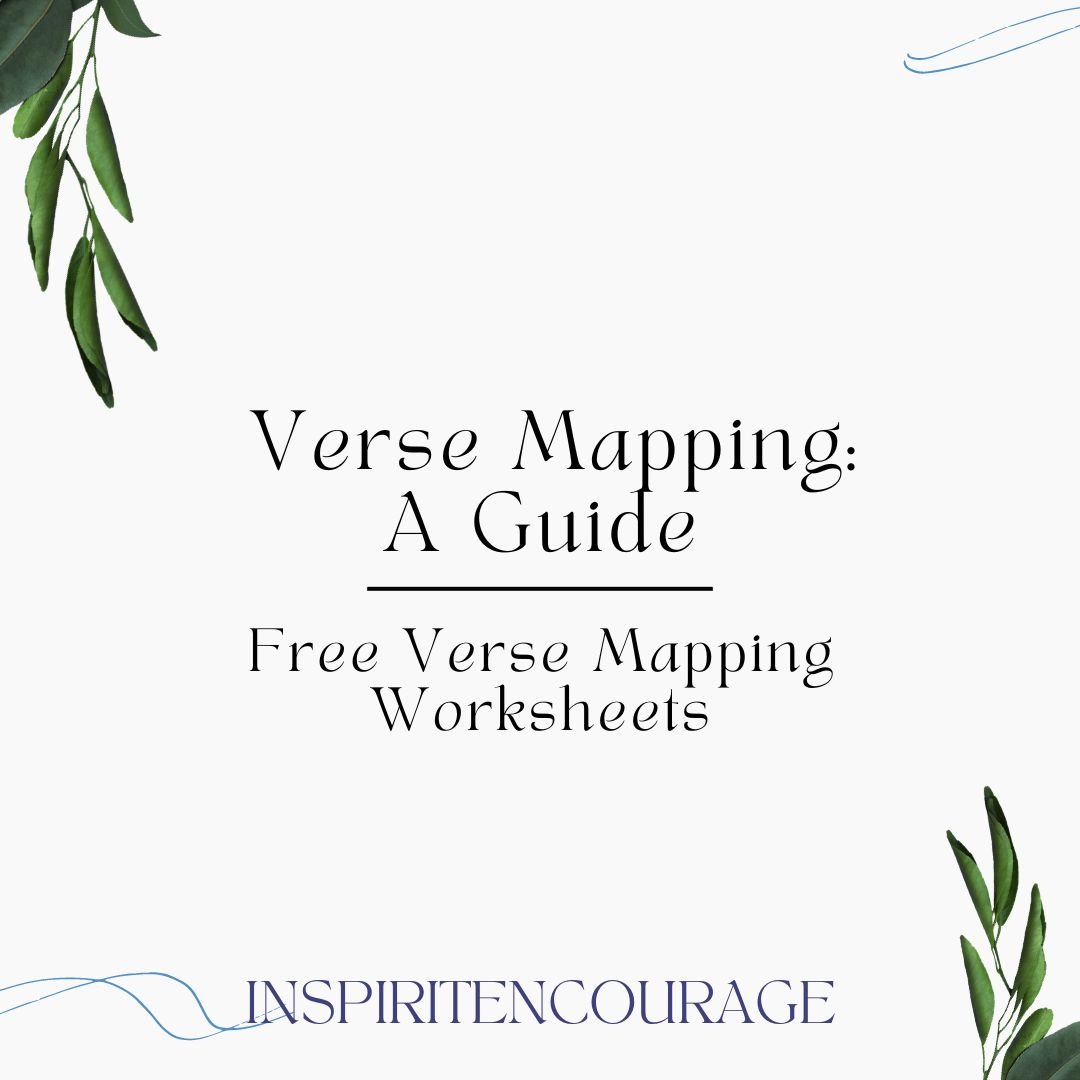Verse Mapping - What It Is
As I’ve been researching and sharing bits about studying the Bible, verse mapping has popped up numerous times. And each time, I’ve wondered what it is. So, I looked into it and found that none of the verse mapping tools that I found were the same as another. It shouldn’t surprise me, but I guess it does. Several people call something ‘verse mapping’, but none of them do it the same as another.
I admit when I heard about verse mapping it took me back to my high school grammar days. I expected that we were going to find the subject and verb(s) and the various modifiers, linking words and all the other parts of speech. I found out that is not at all what verse mapping is.
General Verse Mapping
The various systems of verse mapping generally encourage readers to slow down and consider only one verse or short passage at a time. By looking at only one short passage, the study style does a deep dive into one topic. Some instructions I found said to do this in one sitting, others outlined it as a step-by-step process to last one week for each verse/passage.
Steps to map a verse
There are some steps that were similar across various explanations of verse mapping. The variations tend to relate to what we do with the general steps and how in-depth we go as we study the verse.
1. Write out the verse in your favorite translation.
2. Write it out in other Bible translations and consider the differences.
3. Note down important or key words. From here, you may write out the definitions from a dictionary or Bible dictionary. Other resources encourage the studier to look these up in the original Greek or Hebrew and write it down.
4. Consider the context of the passage. All the instructions for verse mapping had us look at the passage surrounding the verses. Some ask the reader to go deeper by looking at the broader context (author and audience, general message of the book).
5. Note reference(s) to other scripture or related verses. In this step the understanding of the concepts may be considered in the broader context of the same topic as found in other books or parts of the Bible.
6. Most ended with personal application. Unfortunately, many of these were simply, ‘how do I apply this to my life?’ rather than looking at the truths about God and man revealed in the verse and how that truth impacts our lives.
Style-wise, some of the verse mapping was done around the verse hand-written in the center of a blank page, others had form with blocks on a page to fill in.
I mentioned above that I expected to be back in grammar class for this kind of study. I actually think that too would help us gain understanding. I often find that verses may contain only part of a sentence and the sentences are long and convoluted. Mapping them to understand what is modifying each part may be very helpful. Do you recall doing that in school?
I would personally add ‘map out the connections and parts of speech.’ This may be particularly helpful with longer verses or passages of a few verses. I admit that at times it is difficult to remember what especially Paul or Peter were referring to and it gets confusing!
Nothing School-like in verse mapping
In the end, there is nothing too studious and school-like about verse mapping. There is a lot of freedom for creativity in the style, depth, and steps to carry out in this method of study. Those who learn well visually might gain more from this type of study. I’ve drawn up a couple of verse mapping worksheets and placed them in the free resources. If you are a subscriber, you have access to that archive. If you’d like a free copy, please subscribe in the box below.
Have you tried verse mapping? What do you think of it?
